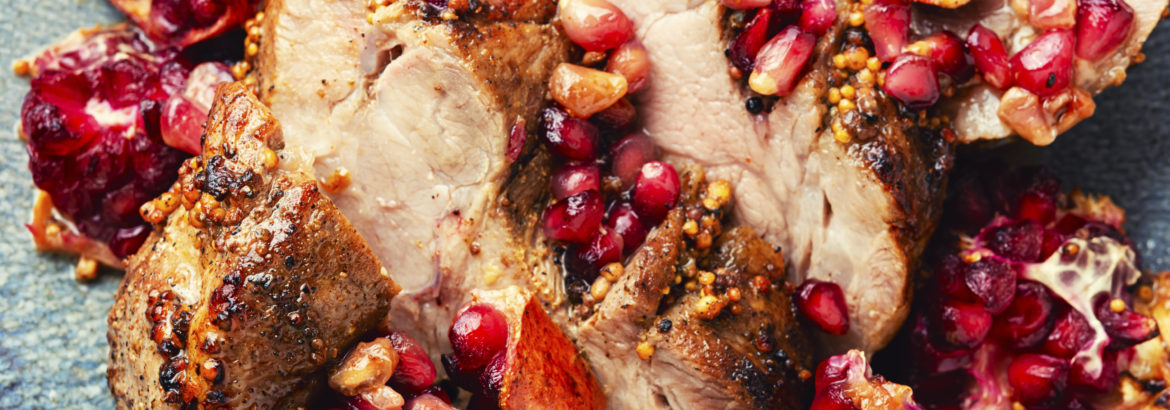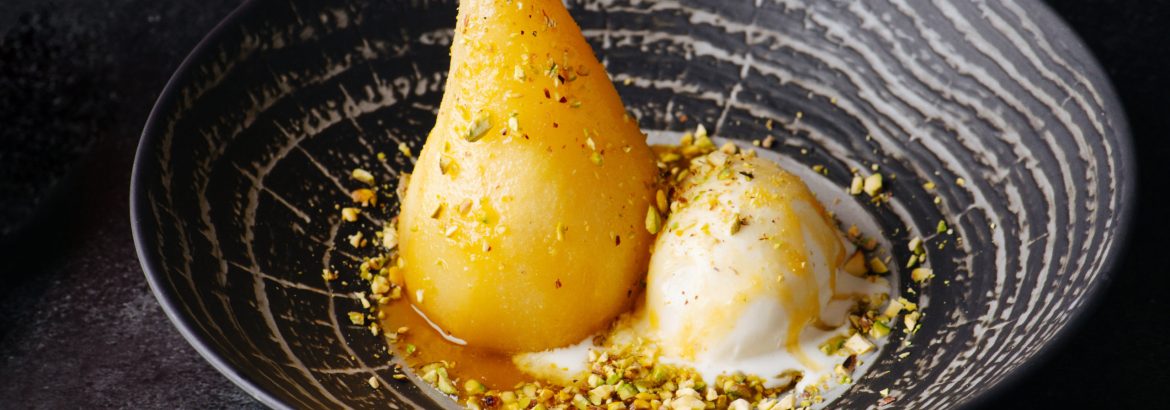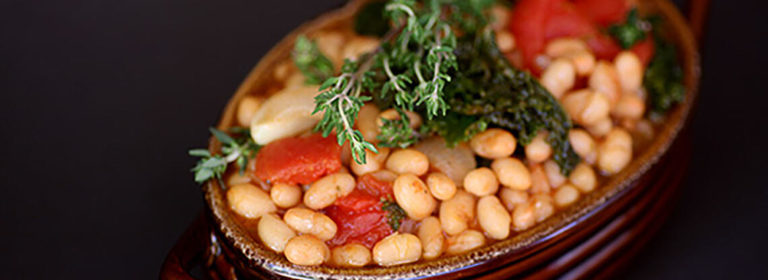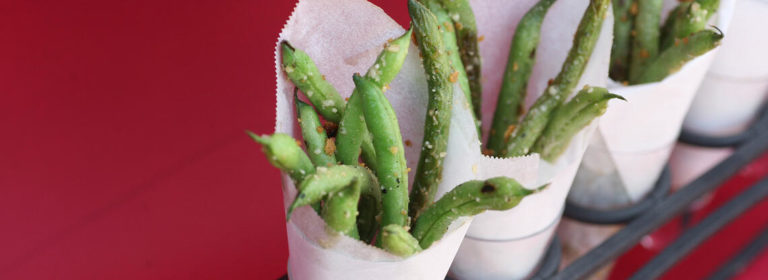Fall menus transition out of the bright, tropical flavors of summer into comforting, subtly sweet notes from tree fruits like apples and pears.
- Highlight with jewel tones. Ruby red autumn fruits like pomegranate seeds and simmered cranberries accent the more neutral color palate of fall dishes and also lend a hint of bitterness for balance.
- Beyond desserts. Use favorites like apples and pears to add sweetness and toothsome texture to poultry and pork entrées.
- Heartier salads. Give greens complexity with grains like quinoa, farro, or bulgur wheat and crisp, crunchy Granny Smith apples or roasted D’Anjou pearsStock plenty of green and red apples, pears, figs, and avocados that pair well with bacon, nuts, dark leafy greens, and roasted meats. These healthy, versatile ingredients can be cross-utilized in salads, sandwiches, appetizers, and entrees.
- Focus on wellness by fortifying salads with crunchy, natural fruits rather than carb-heavy croutons or high-calorie cheeses.
- Offer classic autumn desserts like apple pies, tarte tatin, and wine-poached pears that can be pre-baked or prepped for easy plating.
- Suitable mates: pair fall fruits with Butternut or Acorn squashes, pumpkins, sweet potatoes, Brussels sprouts, cauliflower florets, and hearty spinach or cabbage.
Seasonal Checklist:
- Stock plenty of green and red apples, pears, figs, and avocados that pair well with bacon, nuts, dark leafy greens, and roasted meats. These healthy, versatile ingredients can be cross-utilized in salads, sandwiches, appetizers, and entrees.
- Focus on wellness by fortifying salads with crunchy, natural fruits rather than carb-heavy croutons or high-calorie cheeses.
- Offer classic autumn desserts like apple pies, tarte tatin, and wine-poached pears that can be pre-baked or prepped for easy plating.
- Suitable mates: pair fall fruits with Butternut or Acorn squashes, pumpkins, sweet potatoes, Brussels sprouts, cauliflower florets, and hearty spinach or cabbage.




